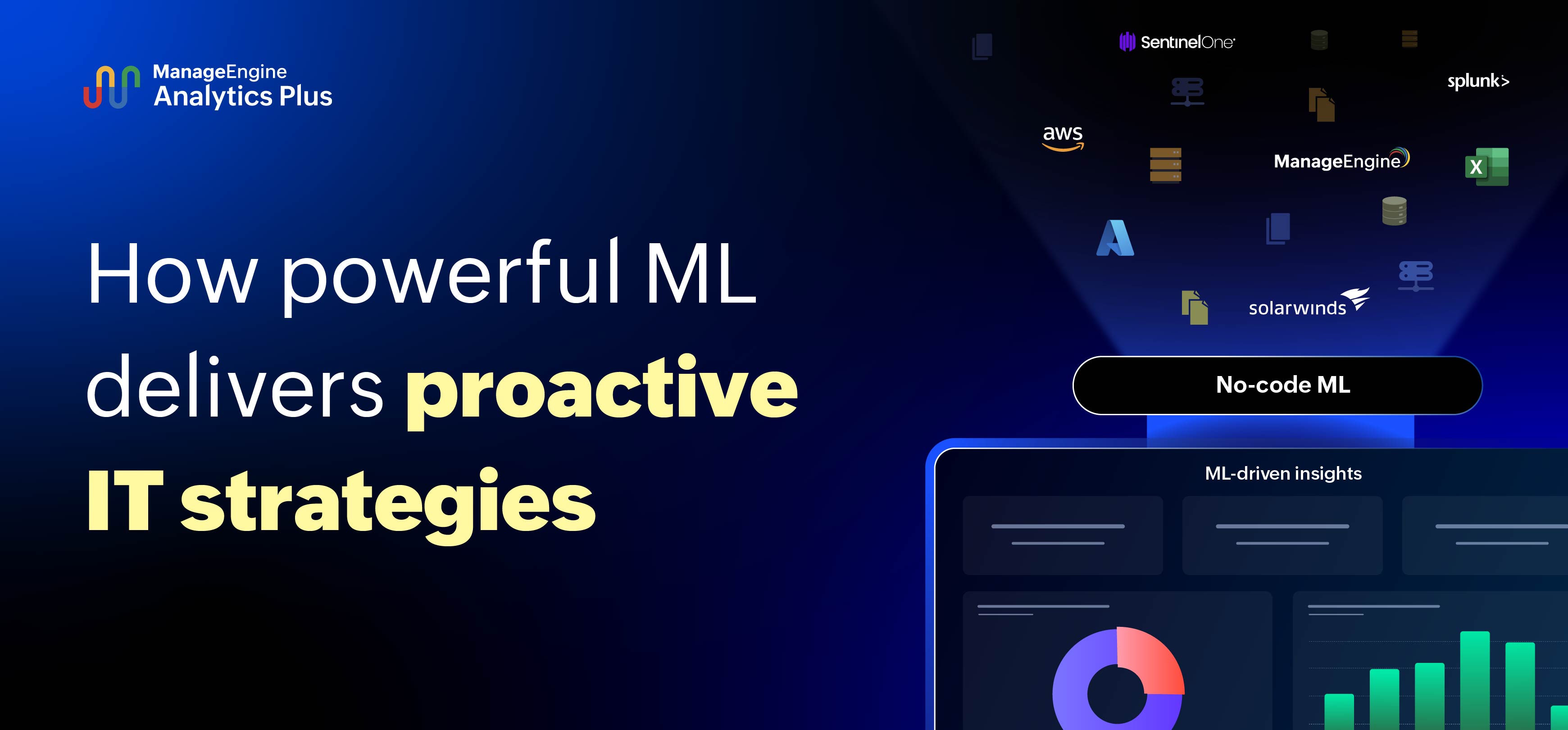- HOME
- ITSM Analytics
- Leverage advanced analytics to identify major cost drivers of IT
Leverage advanced analytics to identify major cost drivers of IT
- Last Updated: July 1, 2024
- 797 Views
- 5 Min Read

Creating a successful IT budget is like solving a complex puzzle, and identifying the cost drivers is the critical piece to completing the whole puzzle. Just like solving a puzzle requires a strategy, planning an efficient IT budget requires understanding the underlying factors that drive costs. Identifying and curtailing such cost drains is critical to make the perfect budget plan, without which these cost drivers chip away at the IT budget meant for modernization or other innovative plans, or result in IT departments overshooting their IT budget. The challenge in identifying these cost drivers is that they are often masqueraded as legitimate IT expenses.
By leveraging advanced analytics, IT leaders can understand their organization's IT expenditures, identify cost drivers, and make informed decisions to curb unwanted expenses. In this blog, we will explore the benefits of using advanced analytics to identify cost drivers in IT.
Why should IT leaders first identify cost drivers to make the ultimate budget plan?
Identifying cost drivers forms the foundation for developing an effective IT budget plan. By enabling IT leaders to understand the underlying factors that drive costs, they can allocate budgets effectively, establish priorities for expenses, and pinpoint areas where they can cut costs. They can also foresee and plan for changes in IT costs and modify their budgets accordingly, ensuring that resources are allocated to meet organizational goals. With the aid of advanced analytics, IT leaders can create an ultimate budget plan that aligns with the organization's strategic objectives, maximizes ROI, and drives business growth.
Before we begin identifying the cost drivers of IT, here's a report that shows the year-on-year IT spending of a fictional organization.

According to the above report, there were sudden spikes in IT spending in 2021 and 2022. By drilling down into what cost the help desk extra dollars in 2022, we can create another report that shows detailed spending in 2022.
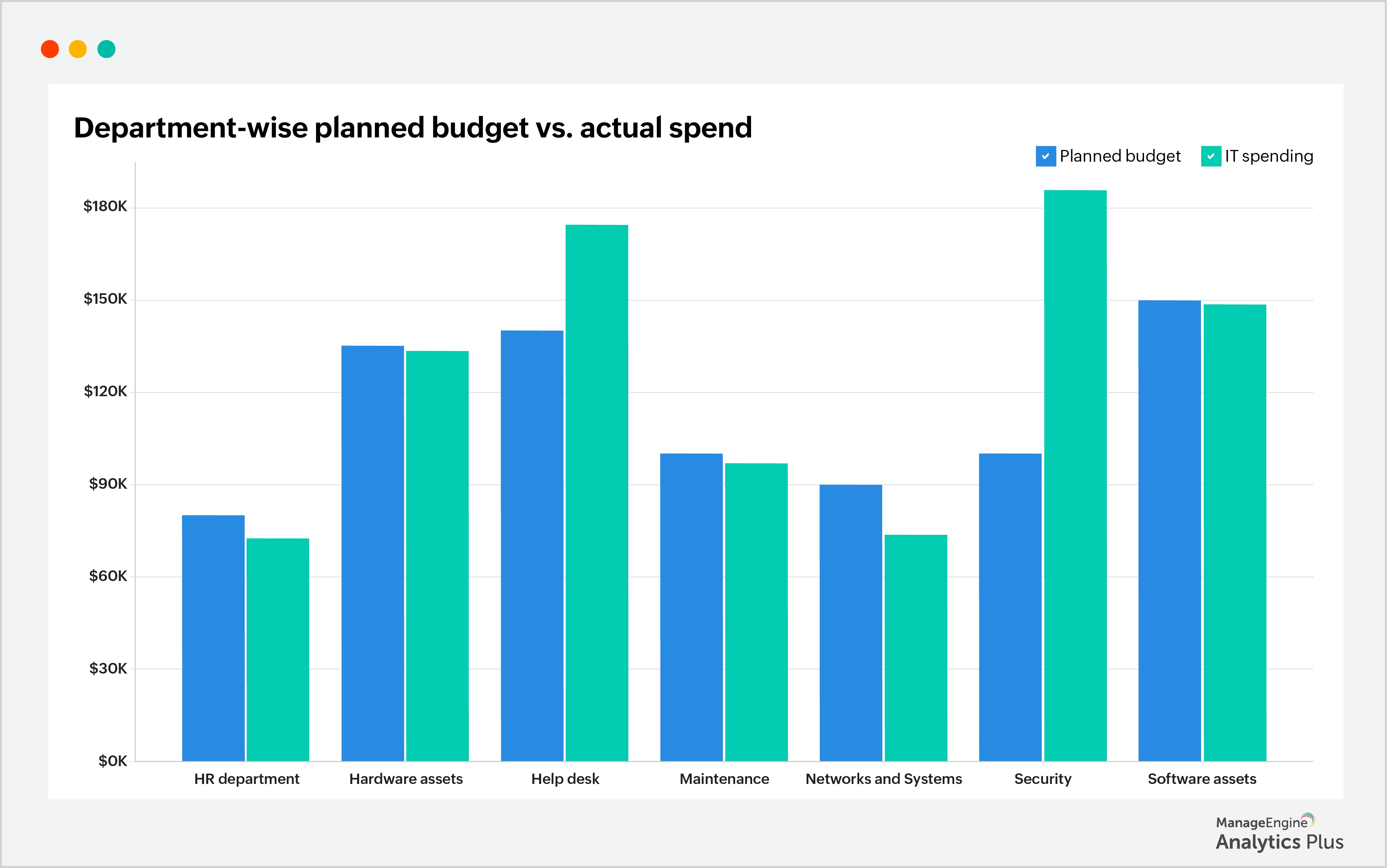
According to the report, IT security incurred the highest expense—nearly twice as much as its planned IT expense. Next to security breaches, expenses related to the help desk and software assets take up a huge share of the IT budget. While there could be various reasons behind the spike in IT spending, it is critical to investigate and stay clear of such expenses in the future. Here's a detailed analysis of IT expenses from the three areas identified above:
1. Unexpected surges in help desk ticket volume
It is no secret that a help desk is considered the largest cost center of IT. End users seek help from the help desk for anything from a simple password reset to application outages to security breaches. As a result, the help desk is always brimming with new or unresolved tickets, and during downtime, the ticket volume increases further, leaving technicians feeling swamped. This is because incidents always set off a chain of smaller events that result in an increase in ticket volume. As the number of tickets increases, so do the costs of resolving them.
Consider this scenario: Suddenly, your help desk is flooded with incoming tickets as users can't access a few applications to carry out their tasks, leaving your technicians struggling to handle the surge in tickets. By leveraging advanced analytics, IT leaders can spot why their help desk is overwhelmed with tickets. Here's a daily trend report of incoming tickets in a fictional organization:
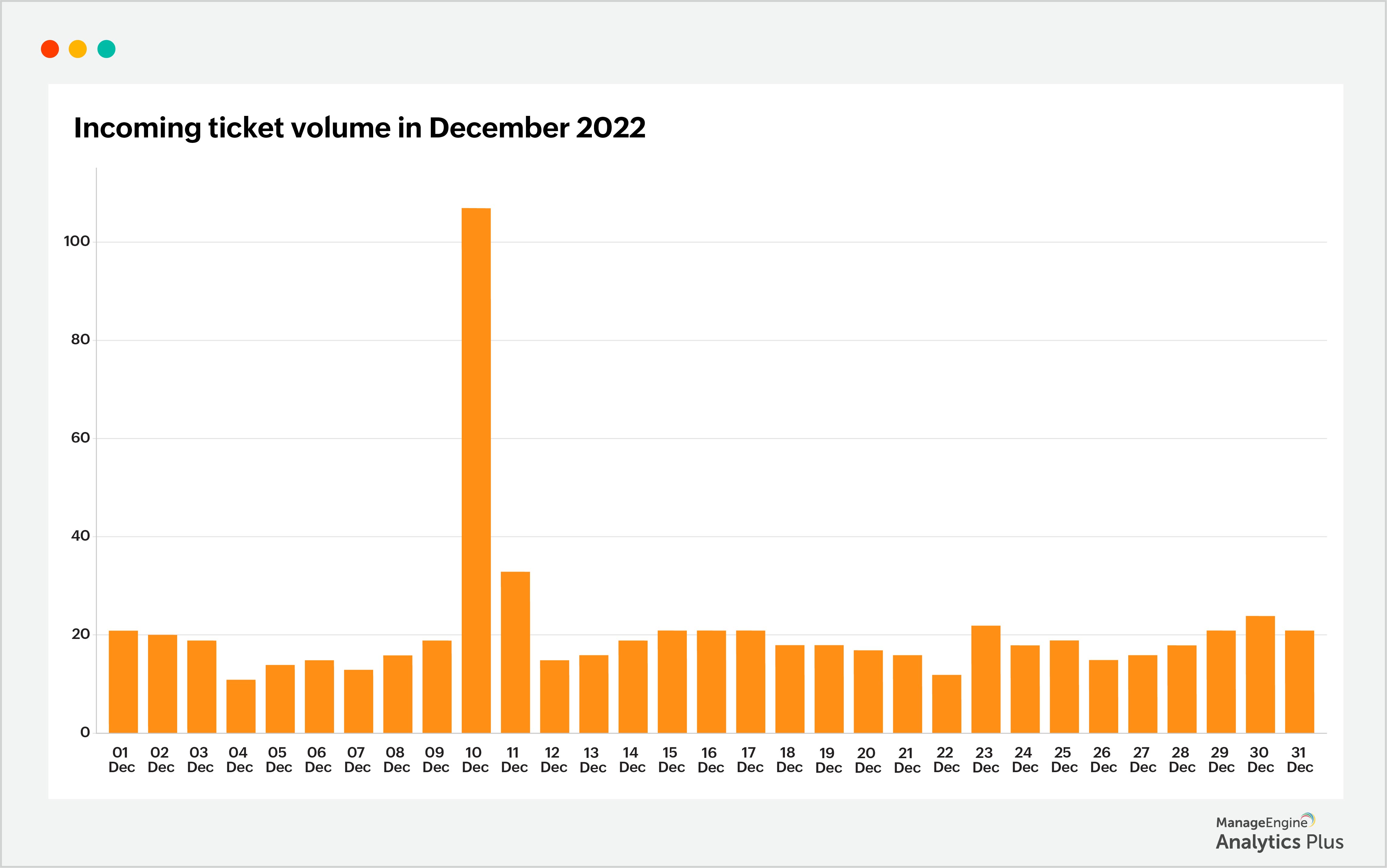
The report shows a sudden increase in incoming tickets on December 10. To pinpoint the reason behind the surge in incoming tickets, we have created another illustration using the subject lines of tickets raised on December 10, 2022.
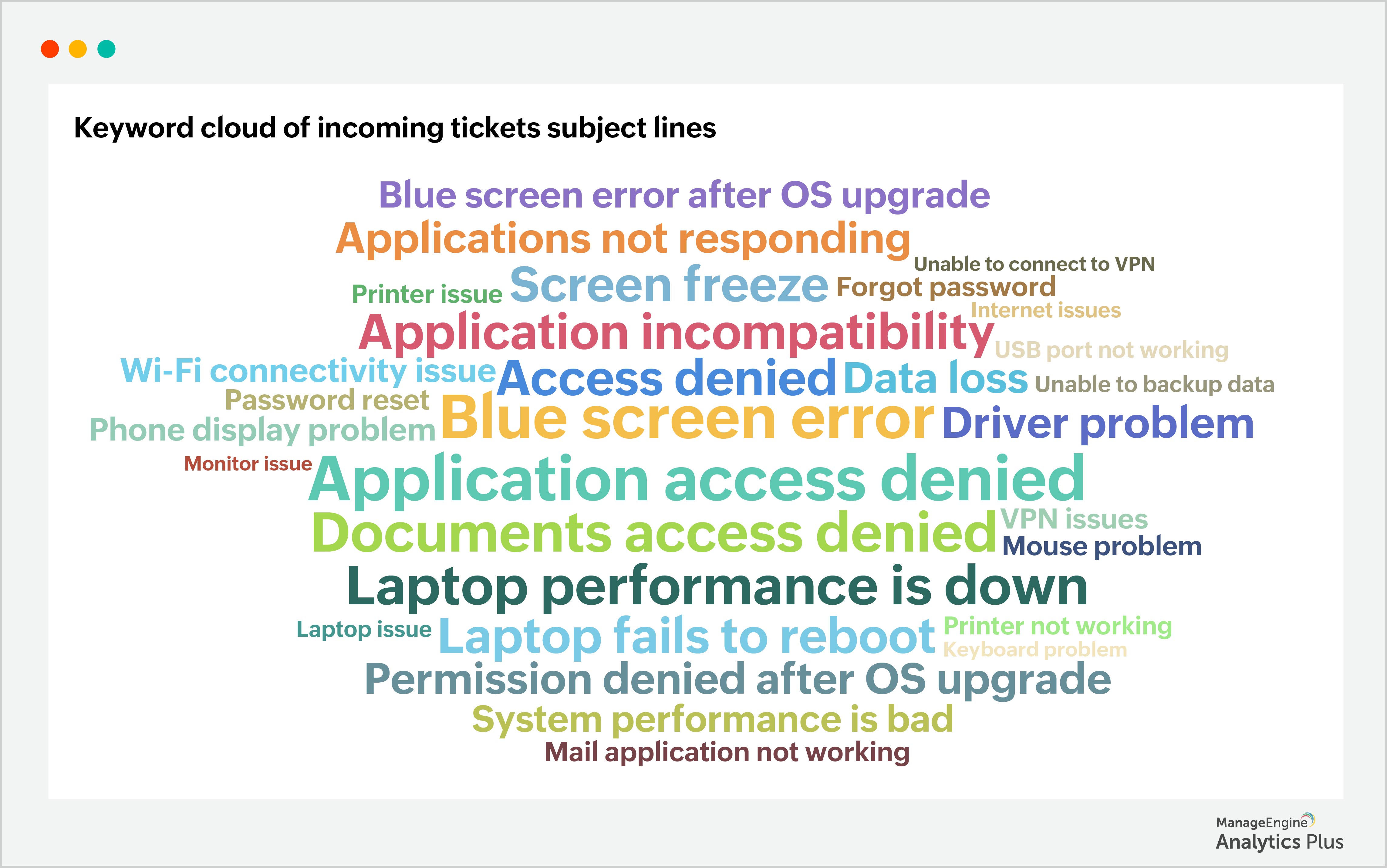
From the report, it's clear that incidents related to denied access and OS upgrades are repeated. This pinpoints a possible flaw with the OS upgrade carried out the previous day that may have resulted in an increase in the number of help desk tickets. Armed with this information, IT leaders can make data-driven decisions to identify the reason behind the sudden flood of tickets at the help desk. When organizations can identify the underlying reasons behind spikes in ticket volume, they can address these issues effectively, resulting in reduced ticket volumes and cost savings.
2. Application-related downtime
Downtime is expensive, involving direct costs such as detection, containment, and recovery costs, and indirect costs such as labor costs, legal costs, overtime costs, opportunity costs, compensation costs, and productivity loss. Additionally, the cost of repairing downed applications can be significantly high as it requires external experts. The good news is that downtime can be prevented, or at the very least, minimized. By leveraging advanced analytics, IT leaders can proactively identify potential issues before they spin into full-blown problems.

The visualization above shows every single application that went down just before its planned maintenance. A series of such events call for a shorter maintenance schedule so that these applications can be repaired before they break down.
While reducing the gap between consequent maintenance cycles can prevent downtime in advance, looking at symptoms or signals from the application right before it went down is also a good way to proactively detect application failures should those symptoms or signals reoccur.
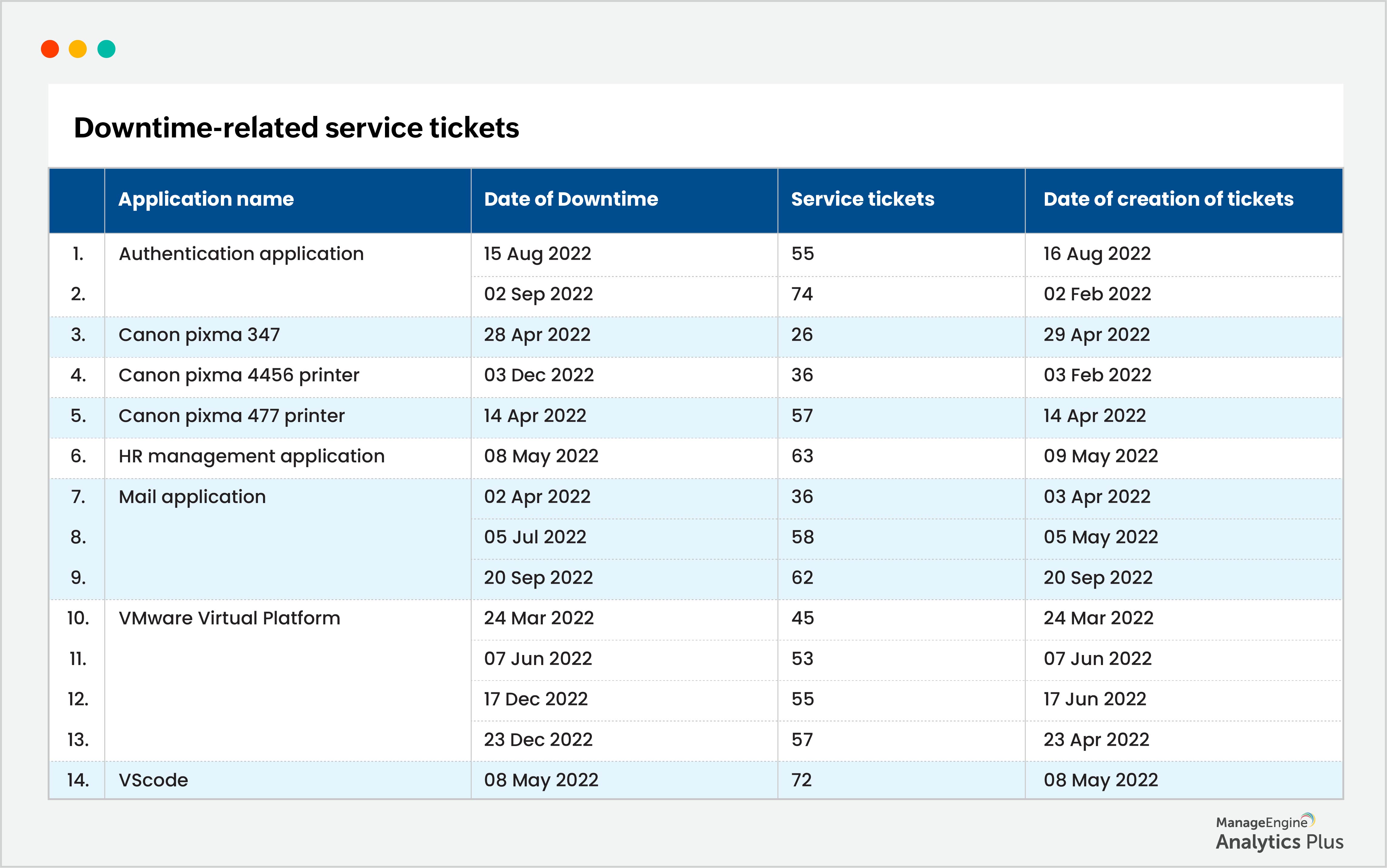
Analyzing such recurring patterns in your help desk can help restructure maintenance schedules, reduce occurrences of downtime, and reduce the duration of downtime. This can help reduce the costs associated with downtime.
3. Cybersecurity breaches
Though not a common occurrence, cybersecurity breaches do occur, and they are costly, embarrassing, and damage the organization's reputation permanently, which is often more harmful than the direct monetary loss incurred. The total costs associated with a cybersecurity breach are a sum of the expenses related to its remediation, legal fees, and regulatory fines, as well as lost revenue and brand reputation. Here's a sample report that shows the number of security breaches and their remediation costs for the last 12 months:

According to the report, the cost to resolve cybersecurity incidents has been steadily increasing over the last 12 months. These costs are eventually paid out of the overall IT budget, diverting funds from other IT investments or plans. Investing in better cybersecurity prevention methods can help bring down the number of cybersecurity breaches and the costs associated with them. As a best practice, IT leaders can set aside funds especially to deal with cybersecurity breaches and ensure that the costs of actual cybersecurity incidents remain within those specified limits.
Key takeaways
To summarize, the secret sauce to optimizing your IT budget is identifying your organization's cost drivers. Though it is a daunting and time-intensive task, advanced analytics make it easier. With advanced analytics, you can identify why your help desk, applications repairs, and security breaches are costing you a hefty price and quickly rectify them before they become full-blown problems. If you're looking for an advanced analytics solution to help you identify your organization's cost drivers, sign up for a free trial of Analytics Plus, ManageEngine's AI-enabled IT analytics application.
Talk to our experts to discover all the ways you can leverage advanced analytics to identify the cost drivers in your organization to build a perfect budget plan.

